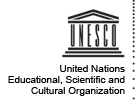The media in Uganda has grown over the last three decades mainly because of liberalization of the sector which permitted individual ownership. This pattern implies an increase in the number of electronic and print media houses that widely recruited personnel to run these entities. Currently there are over 240 licensed radio stations in Uganda, although this figure is higher if the other 40 unlicensed are taken into account. Televisions currently operating number over twenty and newspapers stand at thirty. The context appears pluralistic given the statistics but this does not mean there are...
IPDC Project implementation status: Ongoing
In 2011 Guatemala descended 20 positions in the world classification of press freedom as developed by Reporters without Borders. In the period (2008-2011) a total of 8 journalists were reported assassinated, of whom none have had their case solved, with the number of violations against freedom of expression increasing to 179 cases of aggression.
Several reports point towards the fact, that many subjects such as organized crime, corruption, impunity and human rights violations are subjects that are not covered and present in the media. Journalists in Guatemala face violent attacks,...
A lot of expansion and some progress has been realized in the media landscape, not only in Kenya but in the entire Eastern Africa region in recent years, including the rapid increase in media training institutions, both at the University and tertiary level. Reservations nonetheless continue to be expressed regarding the quality and depth of media content in broadcast and print production, based on the growing sophistication and high levels of expectations from a more educated and democratically aware citizenry.
Following discussions among East African Potential Centres of...
A total of 24 journalists have been killed in Honduras in the past decade, 17 of them since the coup d’état. Murders of citizens who provided information to the media or defended human rights and media pluralism also go unpunished. In Honduras, women journalists and journalists who work to defend women’s human rights are particularly vulnerable and at risk. Women journalists receive vicious threats and direct attacks, as well as endure harder censorship because of wide-spread bias that women are more prone to cave in to intimidation.
In 2011, with the support of the United Nations...
Namibia is preparing for general elections in 2014. The ruling Swapo Party congress takes place in November 2012 and will be the official launch pad for party (and individual) election campaigns in preparation for the 2014 ballot. Next year, 2013, is therefore a critical pre-election phase for Namibians. Thus, the quality of the national debate will depend on the capacity of Namibians including the marginalised groups such as the rural women and the youth to engage with the political process. This will be through the envisaged civic awareness campaigns and secondly through a process that...
This project is focused on strengthening science journalism training at all tertiary levels, reaching both undergraduates and mid-career journalists on a post-graduate level. This will aim at training science journalists in South Africa every year and to provide training to students at postgraduate level to follow a course in science & technology journalism at Stellenbosch University. The initiative also builds on efforts by Tshwane University of Technology, Namibian Polytechnic and Makerere University to enhance science journalism reporting, within the framework of UNESCO’s work in...
The liberalization of the audiovisual space in 1990 witnessed an upsurge of private radios, television stations and newspapers across the national territory. Cameroon today boasts of over 300 newspapers, more than 200 private radio stations and over 50 private television channels. This dramatic growth of private ownership of media space has been supported by a modest growth in training institutions, most of which offer middle level journalism training.
This modest growth in the area of journalism training has created a vacuum in radio and television stations that require personnel...
Indigenous communities in Mexico have long since been excluded and relegated to poverty and marginalization, urgently requiring access to media platforms in order to freely express their voices and to participate in public decision making. Radio Huayacocotla La Voz de los Campesinos (Radio Huaya) has been able to contribute to the exercise of these rights, despite the adversities. Nahuatl, Tepehua and Otomi indigenous people and the Spanish-speaking peasants are the main actors who participate in the Radio. In rural and indigenous communities in Mexico there are a few women working in...
Right of access to information is considered as one of the most essential Constituents of freedom of press and media. As per the studies and annual reports issued by the Press Syndicate and the Civil Society Institutions, right of access to information is inaccessible to journalists and media professionals in Jordan. The Jordanian Constitution does not provide citizens the right of access to information, in addition to the fact that the law which guarantees the right of access to information is a restricted law which leads to making the confidentiality of information and documents is the...
Organized crime and corruption are the principal sources of direct violence that have brought about the killing of more than a hundred journalists in the past decade, mainly in Mexico and Honduras, the forced exile of hundreds of journalists; and the shutdown of dozens of media outlets. News media self-censorship has become institutionalized as "common practice." Recklessness and negligence in news coverage is due to the lack of training in basic investigative techniques, inadequate compensation for journalists by their employers; and absence of solidarity and camaraderie among journalists...
